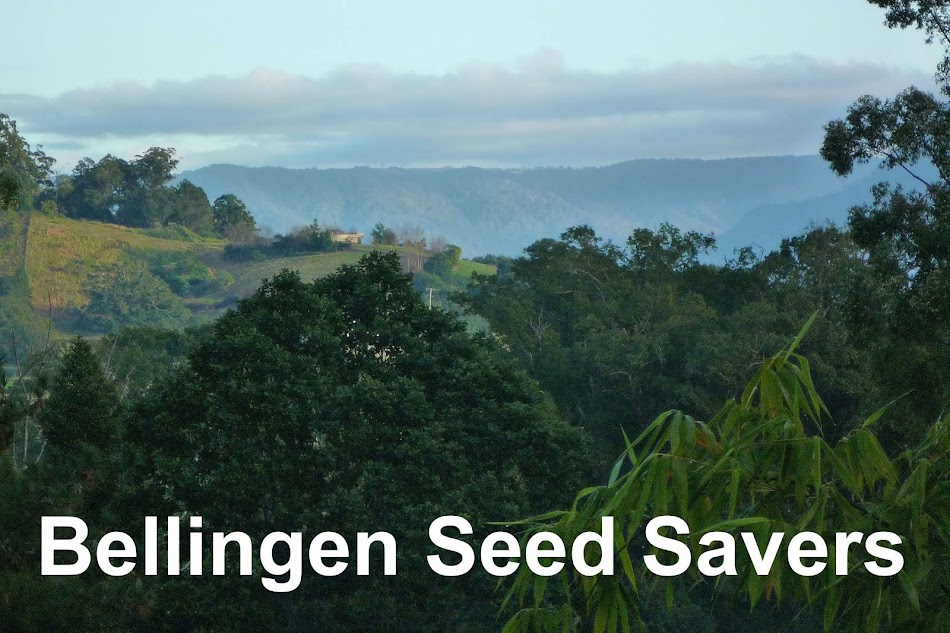Hi Seed Savers
We had a wonderful visit to Carol's garden last week and were all delighted by the design, the collection of orchids, bromeliads, succulents, irises and the excellent use of groundcovers - and much, much more. If you go to the blog you will find that John has posted many photos of this picturesque garden. A big thank you to Carol for inviting us and many congratulations for the years of dedication that she has put into the garden.
We were lucky that the rain held off until after our tour of the garden and we then enjoyed tea and conversation, a debriefing on the recent events and a lively Q&A session. I was happy to share the news that, despite some reasonably large expenses recently, our bank balance remains very healthy. All the donations received at the Plant Fair, etc. and the expenses of the Fantons' visit balanced out very well.
It was agreed that we benefitted greatly from the Fantons' input and a few suggestions were made as to other experts who might be willing to share their knowledge with Bellingen Seed Savers next year, e.g. Jackie French, Jerry Coleby-Williams, Isobel Shepherd, a local edible weed expert, etc. If you would like to suggest others or specific topics you would like covered, please let me know. I will start making enquiries.
Q & A sessions have become a regular part of our Gatherings and give us an opportunity to pick up some useful practical tips from one another. I sometimes receive cries for help between Gatherings too and here are a couple of recent ones which were discussed last week:
1. Q from Rhonda - After one of the gatherings I struck some elderberry pieces and they are now planted in the garden. However I did not check how big they grow and may have put them in the wrong spot. Not sure who bought the plant to the meeting but if you have time and think about it could you ask the group via email, how big it grows, I’d much prefer to transplant it now than later.
A from Elaine -
The Elder, ( Sambucus nigra )...has more Folklore attatched to it, than any other European plant.....and can grow to 10 metres depending on conditions.
I like to cut them back to just above a metre, and keep pruning the tips, to produce more flowers and berries, and allowing them to grow to just over 2 metres, makes harvesting easier. However I like to leave some, for support for the aerial potato, and creating a micro climate, for underplanting, to protect plants from extreme conditions of heat and cold. Pruned they also make a fast growing wind-break.The FLOWERS treat, all Respiratory and inflammatory conditions,colds, sore throats, hayfever, feverish illnesses, arthritis and are a mild laxative. The Berries, are rich in Vitamin C and flavenoids, with antiviral and immune enhancing actions. Strengthen the eyes and improve night vision.Both Fruit and Flowers have been traditionally used in TEAS Cordials Jams and Jellies Wines and Anti - ageing formulas...hence the name ELDER.ELDER FLOWERS AND OR BERRIES with yoghurt, make an excellent addition to the morning MUESLI.A brew of the leaves is a good insecticide.
A from group - a number of protection methods were suggested - a piece of polypipe or an upturned drink bottle, pushed into the ground around the seedling.
Causes suggested - birds, slugs/snails, 4-legged creatures......
3. Q from someone in the group - a Brazil Cherry - flowers but no fruit
A Could have been the period of wet weather
If you have a query about something you are growing, please send it in and I will circulate it.























